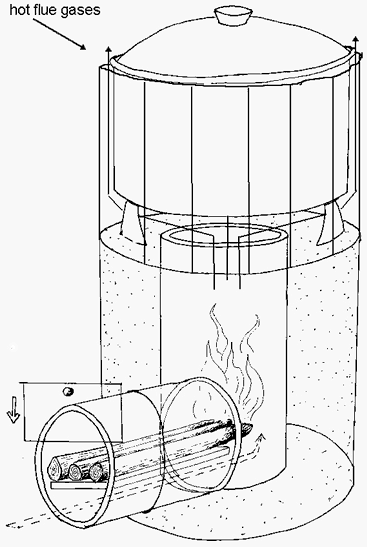|
|
| Editor's note: This is a stove project drawn to provide underdeveloped countries with an efficient, safe wood stove for daily cooking. But, it could be a good starting point for those wanting to experiment in the natural-fueled stoves field. |
| THE WINIARSKI ROCKET STOVE
· Efficiency: 12-42%. The efficiency depends on type of a heat exchanger used. The Rocket elbow can be made from different materials to improve its durability. We have used sand/clay (Lorena), pumice/concrete, heavy steel pipe, 430 stainless steel or special heat resistant ceramic. Currently all of our stoves in Honduras are built with this type of refractory ceramic.
Each of our wood cookstoves incorporates a unique combustion chamber. This is how the Rocket elbow works:
The Rocket stove is an improvement over the three stone fire but it is only one part of the equation. In order to really save fuel wood we must maximize the heat transfer to the pot.
This picture shows a thin piece of metal (a skirt) wrapped around the pot. This skirt forces the hot flue gases to rub against the bottom and the sides of the pots. The gap between the pot and the skirt should be about 1cm (assuming you are using an average-sized pot). In our tests, this simple heat exchanger (an old coffee can works well!) almost doubles the efficiency of the rocket stove. CLICK HERE FOR MORE INFO ON OUR STOVE RESEARCH
|
The Author's Website: http://www.efn.org/~apro/index.html |




